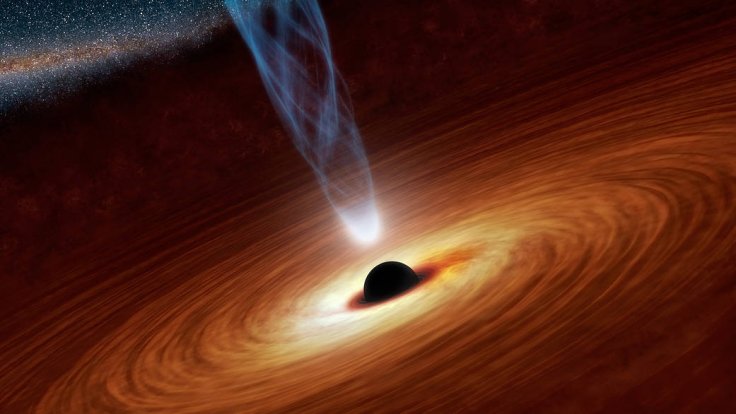Scientists recently came across two orbiting black holes that are occasionally colliding with one another. Due to the collisions, the pair is producing energy outbursts on a regular basis.
The scientists were able to spot the black holes after their energy outburst was detected by NASA's Spitzer infrared telescope. Details of their observations were presented in a new study published in the Astrophysical Journal Letters.
The Black Holes Of OJ 287

The black holes are collectively known as OJ 287. They exist in a galaxy that's about 3.5 billion light-years from Earth's neighbourhood. While one of the black holes is relatively small, which is about 150 million times more massive than the Sun, the other one is supermassive.
According to the observations by the scientists, the larger of the two is about 18 billion times the mass of the Sun. As noted by the scientists, the smaller one follows an orbit around the larger one. Occasionally, the smaller black hole bumps into the accretion disk of gas and dust surrounding its larger counterpart.
Detecting The Energy Outbursts

Through Spitzer, the scientists detected a powerful outburst of energy coming from the dancing black holes. After studying the outburst and the interaction between the two black holes, the scientists learned that the emissions of energy roughly occur every 12 years.
Although most of the outbursts occur regularly, sometimes the emissions happen a year apart. In some cases, the outbursts occur every 10 years. As noted by the scientists, the outbursts are most likely due to the collision between the smaller black hole and the larger one's accretion disk.
Frequency Of Energy Bursts
As for the frequency of the outbursts the scientists believe that this could be caused by the orbit of the smaller black hole. It is possible that the pattern of its orbit changes each time it goes around the larger black hole.
"The orbit of the smaller black hole precesses. That's why the times of the impacts vary," Mauri Valtonen of the University of Turku in Finland and co-author of the study told BBC. "Already back in 1996, we had a model that predicted more or less what would happen. But we've just got more and more accurate." According to the scientists, OJ 287's next outburst is expected to occur in 2022, followed by emissions in 2033 and 2034.
Read more









